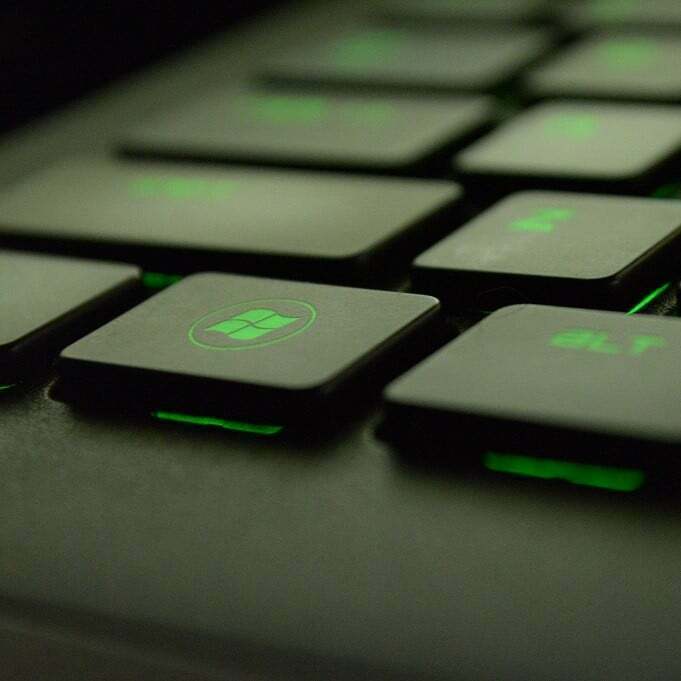
The Top 40 Windows Commands
In this comprehensive guide, we dive deep into the world of Windows commands. Whether you’re a seasoned IT professional, a curious enthusiast, or simply someone looking to harness the full potential of your Windows PC, you’re about to embark on a journey of discovery. We’ve curated a list of 40 essential commands that are designed to empower you, streamline your tasks, troubleshoot common issues, and elevate your Windows proficiency.
Some commands will require administrator level access.
IP Information
1. To display your IP address information use:
ipconfig
2. To expand on the IP details, use:
ipconfig /all
DNS
3. To display DNS details, use:
ipconfig /all | findstr DNS
4. To release your DNS use:
ipconfig /release
5. To renew your DNS use:
ipconfig /renew
6. To display DNS use:
ipconfig /displaydns
7. To copy DNS details to clipboard use:
ipconfig /displaydns | clip
8. To clear any IP addresses or other DNS records from your cache use:
ipconfig /flushdns
9. To perform a nameserver look up for specific website (in this instance we perform an nslookup on google.com), use:
nslookup google.com
MAC Address
10. To display the systems MAC address, use:
getmac /v
Networking
11. To create a HTML report file for your Wireless local area network, use:
netsh wlan show wlanreport
12. To show your network interfaces, use:
netsh interface show interface
13. To show network interfaces with the assigned network IP adresses, use:
netsh interface ip show address | findstr "IP Address"
14. To show your network interfaces DNS addresses, use:
netsh interface ip show dnsservers
15. To set Firewall rules and profiles to OFF, use:
netsh advfirewall set allprofiles state off
16. To turn Firewall rules and profiles back ON, use:
netsh advfirewall set allprofiles state on
17. To perform a basic Ping (in this instance we ping google.com), use:
ping google.com
18. To continuously ping until you stop it, use:
ping -t google.com
19. To trace route to specified address (in this instance we trace the route to google.com), use:
tracert google.com
20. To show network statistics, use:
netstat
21. To display all connections and all listening ports, along with the fully qualified domain names (FQDN) for foreign addresses, use:
netstat -af
22. To display the process ID associated with each connection, use:
netstat -o
- -a Displays all connections and listening ports.
- -f Displays Fully Qualified Domain Names (FQDN) for foreign addresses.
- -o Displays the owning process ID associated with each connection.
23. To display ethernet statistics and the current connection offload state, use:
netstat -e -t 5
- -e Displays Ethernet statistics.
- -t Displays the current connection offload state.
- 5 is the seconds selected interval time between displays.
24. To print the route your connection takes, use:
route print
25. To add a new route, use:
route add
26. To delete route, use:
route delete
System Efficiency
27. To show your systems energy efficiency report, use:
powercfg /energy
28. To create a html report file for your systems battery, use:
powercfg /batteryreport
File Association
29. To associate a filetype with a specific program (in this instance the filetype is .mp4 and the program is VLC media player), use:
assoc .mp4=VLC.vlc
System Scans
30. To check hard disk for errors, use:
chkdsk
31. To find and fix logical errors on the disk, use:
chkdsk /f
32. To locate bad sectors and recover readable information, use:
chkdsk /r
33. To start the system file checker, use:
sfc /scannow
34. To begin advanced system scan using the Deployment Image Servicing and Management (DISM), use:
DISM /Online /Cleanup-Image /ScanHealth
35. To Repair Windows using the Deployment Image Servicing and Management (DISM), use:
DISM /Online /Cleanup-Image /RestoreHealth
Processes
36. To display all running processes, use:
tasklist
37. To kill a running process (in this instance the process ID is 111), use:
taskkill /f /pid111
38. To filter for a specific process by their image name, use:
tasklist /fi "imagename eq chrome.exe"39. To find a running script, use:
tasklist | findstr script
BIOS
40. To reboot system to BIOS, use:
shutdown /r /fw /f /tConclusion
The journey you’ve taken through these essential commands has equipped you with the knowledge to navigate your computer with finesse. From troubleshooting common issues to optimizing your workflow and managing your system with precision, you’re now in command. These commands aren’t merely strings of text; they’re tools of empowerment, ready to help you streamline your tasks, secure your digital world, and unlock the full potential of your Windows machine.
With this command-line knowledge in hand, you’re well-prepared to tackle an array of challenges, whether you’re an IT professional, a tech-savvy enthusiast, or a curious user looking to enhance your Windows experience. Your computer is no longer a black box but a versatile canvas for your digital ambitions.
Remember, mastery comes with practice, and the journey doesn’t end here. Windows is a dynamic platform, and command-line tools evolve. Continue to explore, experiment, and expand your skills, and soon you’ll find yourself not only commanding your Windows machine but also mastering it.
If you want to keep up to date with our latest posts, or you just want to say hi, why not follow us on Twitter/X
If you want to show your support, why not browse through our Products page and see if there is anything you need. Meganano receives a small profit from each sale made via our affiliate links.



